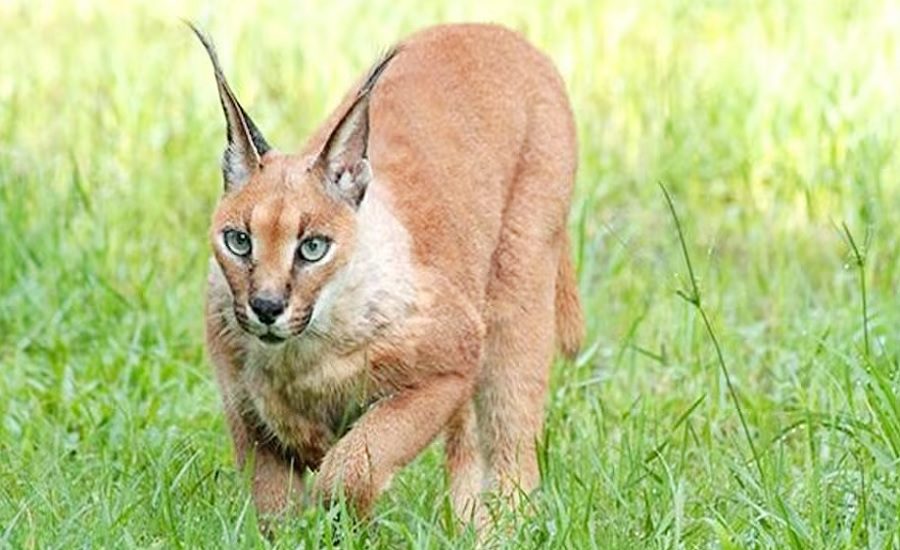Mandsaur, MP: In a significant boost to wildlife conservation efforts, the elusive and endangered caracal has been recorded in the Gandhi Sagar Wildlife Sanctuary in Mandsaur district. The presence of this rare wild cat, known for its stealth and nocturnal habits, was confirmed via camera trap footage installed in the forested landscape of the Mandsaur Forest Division.
The caracal—a medium-sized, shy, and carnivorous feline with distinctive tufted ears—is seldom seen in the wild in India and has long been categorized as endangered due to habitat loss and population decline.
Read Also: Wildlife Mourns: ‘Dai Maa’ Vatsala, Panna Tiger Reserve’s Oldest Elephant, Passes Away at 100+
Ecological Significance of the Sighting
This camera-trap confirmation is the first documented presence of a caracal in a protected area of Madhya Pradesh in many years. Forest officials report the animal to be an adult male, thriving in the arid and semi-arid ecosystem of Gandhi Sagar, which comprises dry deciduous forests, rocky outcrops, and open grasslands—an ideal habitat for this secretive predator.
“This is a matter of pride for the state and a sign of success for our conservation efforts,” said the forest officer overseeing Gandhi Sagar Sanctuary. “The sighting validates that our protected habitat is rich and balanced enough to support rare and sensitive species.”
Caracal in India: A Species on the Brink
The caracal’s natural habitat in India is shrinking rapidly, with the species now found only in a few parts of Rajasthan, Gujarat, and Madhya Pradesh. Their appearances in the wild are extremely rare, which makes this sighting both scientifically valuable and symbolically significant for wildlife conservation in the central Indian landscape.
Conservation Success: A Result of Focused Protection
Officials attribute this ecological success to the sustained efforts of the Forest Department staff and Gandhi Sagar Wildlife Sanctuary team, who have prioritized habitat protection and wildlife monitoring. Enhanced patrolling, habitat management, and the strategic placement of camera traps have all contributed to this success.
Link to Larger Conservation Landscape
This caracal sighting follows another landmark conservation event in the same sanctuary earlier this year. In April 2025, two South African cheetahs—Prabhash and Pavak—were relocated from Kuno National Park in Sheopur district to the Basigaon-Khemla range of Gandhi Sagar Sanctuary. This move was part of a larger effort to diversify and strengthen the predator base in the region’s protected areas.
These back-to-back developments reflect how Gandhi Sagar Sanctuary is fast emerging as a key biodiversity zone in Madhya Pradesh, contributing not just to species revival but also to scientific knowledge and habitat sustainability.



























